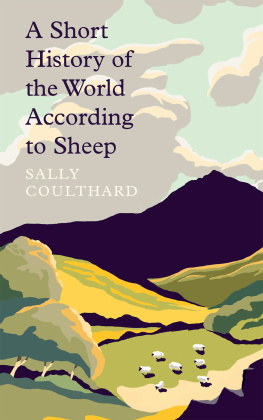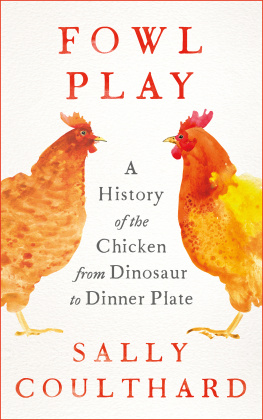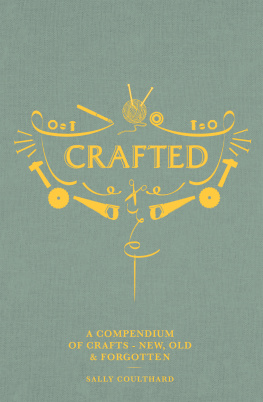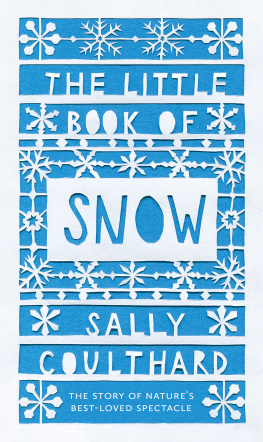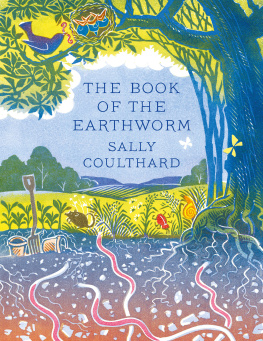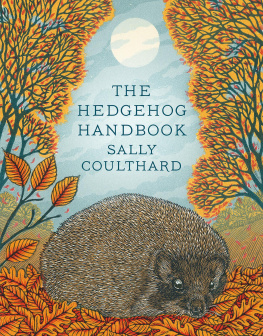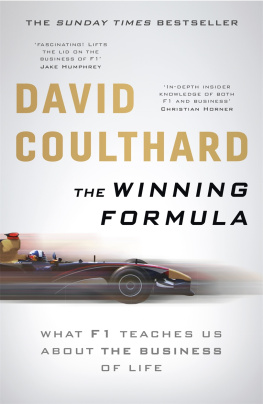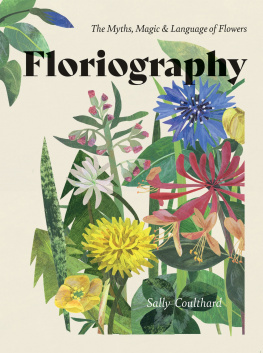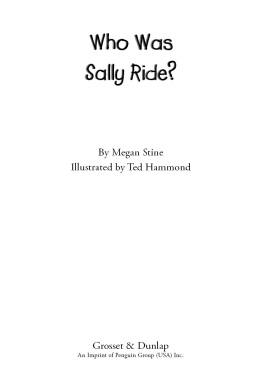Sally Coulthard - A Short History of the World According to Sheep
Here you can read online Sally Coulthard - A Short History of the World According to Sheep full text of the book (entire story) in english for free. Download pdf and epub, get meaning, cover and reviews about this ebook. publisher: Head of Zeus, genre: Non-fiction. Description of the work, (preface) as well as reviews are available. Best literature library LitArk.com created for fans of good reading and offers a wide selection of genres:
Romance novel
Science fiction
Adventure
Detective
Science
History
Home and family
Prose
Art
Politics
Computer
Non-fiction
Religion
Business
Children
Humor
Choose a favorite category and find really read worthwhile books. Enjoy immersion in the world of imagination, feel the emotions of the characters or learn something new for yourself, make an fascinating discovery.
- Book:A Short History of the World According to Sheep
- Author:
- Publisher:Head of Zeus
- Genre:
- Rating:4 / 5
- Favourites:Add to favourites
- Your mark:
- 80
- 1
- 2
- 3
- 4
- 5
A Short History of the World According to Sheep: summary, description and annotation
We offer to read an annotation, description, summary or preface (depends on what the author of the book "A Short History of the World According to Sheep" wrote himself). If you haven't found the necessary information about the book — write in the comments, we will try to find it.
A Short History of the World According to Sheep — read online for free the complete book (whole text) full work
Below is the text of the book, divided by pages. System saving the place of the last page read, allows you to conveniently read the book "A Short History of the World According to Sheep" online for free, without having to search again every time where you left off. Put a bookmark, and you can go to the page where you finished reading at any time.
Font size:
Interval:
Bookmark:

A Short History of the World
According to Sheep
The Little Book of Building Fires
The Little Book of Snow
The Hedgehog Handbook
The Bee Bible
SALLY COULTHARD
A Short
History of
the World
According
to Sheep
AN APOLLO BOOK
www.headofzeus.com
This is an Apollo book, first published in the UK in 2020 by Head of Zeus Ltd
Copyright Sally Coulthard, 2020
The moral right of Sally Coulthard to be identified as the author of this work has been asserted in accordance with the Copyright, Designs and Patents Act of 1988.
All rights reserved. No part of this publication may be reproduced, stored in a retrieval system, or transmitted in any form or by any means, electronic, mechanical, photocopying, recording, or otherwise, without the prior permission of both the copyright owner and the above publisher of this book.
A catalogue record for this book is available from the British Library.
ISBN (HB): 9781789544206
ISBN (E): 9781789544220
Artwork by Nathan Burton
Chapter-opening linocuts Sarah Price, 2020
Head of Zeus Ltd
58 Hardwick Street
London EC 1 R 4 RG
WWW . HEADOFZEUS . COM
For Maddy, Isabella and Emma
1
How to Get a Sheep to Stand Still
2
Wools Scaly Secret
3
Why Some Sheep are so Rooed
4
Tough as Old Boots
5
Rhymes and Ridiculous Cures
6
Mr and Mrs Bo-Peep
7
Dogs and Drovers
8
Scouring and Spinning
9
Knit for Victory
10
Sheepe Hath Payed For It All
11
Sheep Devour People
12
Spinning a Yarn
13
Mills and Boom
14
Up, Up and Away

What have sheep ever done for us? On the face of it, theyre just white noise in the countryside, slowly chewing the cud while we get on with our hurried lives. We sometimes notice them, come the Easter sweetness of springtime lambs, but for most of the year theyre invisible.
And yet, of any animal that has lived on this planet, sheep have shaped the course of human history. From Viking warriors to Renaissance painters, and from Iron Age sacrifices to the rolling hills and Bo-Peep imagery of Ye Olde England, sheep have been central to the human story. Theyve fed us, clothed us, changed our diet, made us both richer and poorer, altered our landscape, helped build great civilizations and win wars, decorated our homes, allowed us to create artistic treasures, and financed pioneers and privateers to conquer large swathes of the Earth. Vast fortunes have been built on the backs of sheep, and cities shaped by shepherds markets and meat trading, but to begin the story we must travel back to the dawn of farming, that moment in time when our spear-throwing ancestors shifted from chasing and hunting prey to raising their own animals.
Between 10 and 20 million years ago, sheeps earliest ancestor evolved in the freezing mountains of Central Asia. During the last Ice Age, these tough, high-altitude creatures began to move outwards some trotted westward, towards Europe, others eastward into Siberia. Some even made it as far as North America, crossing the frozen Bering Strait around 750,000 years ago.
The breed that gave us all modern domesticated sheep was the one that headed west the Asiatic mouflon; a dark-coloured, hairy beast with a soft, woolly undercoat. Unlike the sheep you find on todays farms, these archaic ovines had large horns and, instead of needing to be sheared, naturally moulted every year. The one thing they did have in common with modern sheep, however, is that they were delicious. From the moment our prehistoric ancestors clapped eyes on wild sheep, we consistently and energetically hunted them for food.
And then something happened. Around eleven thousand years ago hunter-gatherers turned their attention towards growing stuff. At a number of sites across a wide, curving area that has become known as the Fertile Crescent which stretches across the Middle East from Egypt through to the Persian Gulf we find that people are starting to cultivate cereals and pulses and, crucially, rearing their own animals. Humans start to keep sheep.
Quite why they did this, we dont know. Maybe we over-hunted or over-exploited our wild resources. Perhaps the fluctuating climate allowed us to grow crops that previously wouldnt take. Maybe the way we organized ourselves socially changed, or population numbers increased, or we suddenly had an abundance of resources that allowed us the freedom to experiment with farming. Its a puzzle, but what is becoming clear from the archaeology is that different groups of people, totally unconnected, started tinkering with farming at around the same time.
One of the earliest places this happened was a small village in central Turkey. The site of Asikli Hoyuk had intrigued archaeologists for years and had long been suspected of being important in the story of farming. This hunch was proved right in 2014, when the bones of hundreds of different animals were discovered. A team led by zooarchaeologist Mary Stiner of the University of Arizona in Tucson uncovered archaeological layers filled with the rubbish and remains of human occupation between 10,500 and 9,500 years ago.
Sifting through the debris it became clear that what the villagers were eating over time had changed dramatically. For the first 500 years the men, women and children of the settlement feasted on wild fish, hares, tortoises, deer and a number of wild sheep. For the next 500 years, however, the proportion of ovine bones steadily rises until, by 9,500 years ago, nearly all the remains come from sheep.
Analysis of ancient sheep pee, which leaves behind salt traces, also showed how quickly sheep came to dominate the village; over the relatively short thousand-year period that Asikli Hoyuk was occupied, people shifted from hunting wild sheep, to then keeping just a few tethered up in the narrow alleyways between the mud houses, to finally large-scale management of sheep in pens on the edge of the village. Sheep farming had arrived.
Although When? is often the first question we ask about our switch from hunting and gathering to farming, the more interesting question is perhaps How?. The relationship between sheep and humans isnt one of mutual symbiosis, the beautiful harmony that exists, say, between man and dog. Sheep dont need us, and yet weve somehow persuaded them to stay.
One idea is that the dog should take credit. In the wild, wolves have been seen herding caribou as part of their hunting strategy, and its been suggested that an enterprising Stone Age individual saw this natural sheepdog instinct and used it to their own advantage. Perhaps our ancient ancestors realized that, with the help of a canine companion, wild sheep could be herded and managed without too much effort turning a feral food resource into a controlled flock. Its true that people started to keep pets some years before they started to domesticate livestock. One lovely example in northern Jordan a 16,500-year-old grave at Uyun al-Hammam uncovered a man deliberately buried with his red, presumably tame, fox, but training a wild dog to round up wild sheep would have been chaotic, if not impossible. The days of One Man and His Dog were still some way off. If anything, as well see later in the book, sheep helped to domesticate dogs (see Chapter 7, page 109).
Its much easier to domesticate an animal if you can catch it young. Many theories about how sheep were domesticated have centred on the idea of hunter-gatherers bringing wild lambs back to their camps, as pets for their children or to fatten up for later. You can imagine the scenario: a wild ewe has been killed in a hunt, leaving behind a tiny lamb. Hunter-gatherer decides to pick up the lamb and bring it back to the camp. There, it can be looked after by the family and either kept for milk or eaten at a later date.
Font size:
Interval:
Bookmark:
Similar books «A Short History of the World According to Sheep»
Look at similar books to A Short History of the World According to Sheep. We have selected literature similar in name and meaning in the hope of providing readers with more options to find new, interesting, not yet read works.
Discussion, reviews of the book A Short History of the World According to Sheep and just readers' own opinions. Leave your comments, write what you think about the work, its meaning or the main characters. Specify what exactly you liked and what you didn't like, and why you think so.

